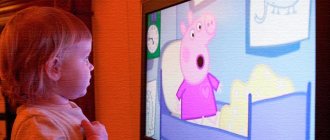Dysarthria is a disorder of the pronunciation side of speech, caused by insufficient innervation of the speech apparatus, resulting in a violation of the neuromotor regulation of muscle tone as a result of damage to the central nervous system.
Dysarthria has several forms, each of which has its own neurological symptoms. The peculiarity of the speech of children with dysarthria is that their speech sounds “blurred”, unclear, and often inarticulate.
Specialists in the field of speech pathology in their interpretation of dysarthria and in approaches to its treatment rely on neurological ideas about the characteristics of the innervation of speech organs from the corresponding brain structures.
The etiology of dysarthria is local brain lesions (stroke, trauma, tumors) that cause organic damage to those brain structures that innervate the speech muscles.
In addition to speech problems, dysarthria also causes:
- Insufficient integration in the work of motor-kinesthetic, auditory-visual and auditory-kinesthetic systems;
- Muscle tone disorders (hypertonicity, hypotonicity or variable);
- Movement disorders (hyperkinesis, incoordination, synkinesis, oral automatisms such as sucking, moaning, smacking)
Distortion of speech due to dysarthria
Speech dysarthria is not considered an isolated disease. This is a symptom that manifests itself in a disorder of all speech characteristics: tempo, intonation, volume, consonance, clarity, etc. As a result, speech becomes slurred.
The cause of the disorder is damage to the parts of the central nervous system responsible for the innervation of the speech-motor apparatus. Dysarthria in adults can develop as a consequence of a stroke, tumor or brain injury. It also accompanies patients with amyotrophic and multiple sclerosis, Parkinson's disease, and occurs in mental retardation, neurosyphilis, and other pathologies affecting the brain.
A whole system of organs is involved in the formation of words. These are lips, tongue, cheeks, larynx, palate, respiratory and facial muscles. With dysarthria, these elements do not work in a coordinated manner. The reason for this is damage to the following nerves:
- sublingual;
- glossopharyngeal;
- facial;
- trigeminal.
In this case, inadequate functioning of the tongue is observed: limited movement of the tongue to the sides, up, down. He is in a tense state, which is why he gets tired quickly, and asymmetry of the lesion may be observed.
The cheek muscles also lack coordinated movements. This reduces the ability to correctly maintain posture when pronouncing sounds. Movement of the lower jaw is difficult. The lips are excessively compressed or, conversely, relaxed, the tongue lies at the bottom of the mouth, and the pliability of the soft palate is also impaired.
Motor stiffness, tension, paresis and paralysis of the facial muscles lead to the fact that the speech of such a patient becomes incomprehensible, unclear and difficult to perceive. It is often characterized as porridge in the mouth.
Speech defects manifest themselves to varying degrees, depending on the area and extent of the lesion. There is an articulation disorder in pronunciation. A person does not pronounce almost all sounds, both vowels and consonants. Often hissing and whistling sounds have interdental or lateral pronunciation, the correct sound of voiced and hard consonants is lost, and defects in the pronunciation of “l” and “r” and sounds with posterior pronunciation appear.
Front-lingual letters (“d”, “t”, “z”, “s”) are pronounced with an interdental whistle. Complex sounds are replaced by simpler ones. Speech either unnaturally slows down, becomes drawn-out, or, conversely, accelerated. Gaps appear between letters and letter substitutions occur.
The voice also undergoes changes. It loses its volume, becoming quieter and weaker. The timbre becomes nasal and dull. Speech is monotonous, without emotional coloring. The intonation of the voice is lost: interrogative, narrative, exclamatory. Speech rhythm is inconsistent, stress placement is disrupted.
Due to problems with innervation, speech breathing also changes. During pronunciation it becomes more frequent, chaotic and intermittent. It’s as if the person doesn’t have enough air to finish the sentence.
Thus, speech impairment in dysarthria is polymorphic in nature, that is, it undergoes changes in all its characteristics. They are quite stable.
Dysarthria is a disorder of the pronunciation aspect of speech caused by insufficient innervation of the muscles of the speech apparatus.
Dysarthria occurs in both children and adults. In adults, focal brain damage can result in both aphasia (speech loss) and dysarthria (slurred speech).
Causes:
The pathogenesis of dysarthria is determined by organic damage to the central and peripheral nervous system under the influence of various unfavorable external (exogenous) factors acting in the prenatal period of development, at the time of childbirth and after birth.
Perinatal causes: these include injuries to a woman during pregnancy, drug and chemical intoxication, infectious diseases (rubella, hepatitis, mumps, influenza, smallpox, tonsillitis, etc.). Blood incompatibility for Rh factor; anemia of a pregnant woman, which leads to fetal hypoxia, bad habits and hereditary diseases.
Natal causes: obstetric pathology, rapid or protracted labor, malpresentation of the fetus, premature birth, hemorrhage in the child’s brain, asphyxia, birth trauma.
Postnatal causes: hemolytic disease of the newborn (jaundice), neuroinfections, meningitis, polyencephalitis, brain tumors, circulatory disorders, traumatic brain injuries.
Among the causes, asphyxia and birth trauma, damage to the nervous system due to hemolytic disease, infectious diseases of the nervous system, traumatic brain injuries, and less often - cerebrovascular accidents, brain tumors, malformations of the nervous system, for example, congenital aplasia of the cranial nuclei are important. brain nerves (Moebius syndrome), as well as hereditary diseases of the nervous and neuromuscular systems.
The mechanisms of dysarthria are determined by the location and severity of brain damage. Sound pronunciation disorders in dysarthria occur as a result of damage to various brain structures necessary to control the motor mechanism of speech.
Such structures include:
- Cortical parts of the brain. When these sections are damaged, articulatory apraxia develops (movement disturbances, no paralysis, muscle tone is normal, but movements are confused). The tip of the tongue cannot make precise movements and therefore the pronunciation of sounds is simplified.
- Subcortical structures - extrapyramidal system. Provides regulation of muscle tone, synchronization in the functioning of the respiratory, vocal and articulatory apparatus, and also ensures expressiveness of speech.
- The cerebellum is responsible for the coordination of movements.
- Medulla. In the medulla oblongata there are nuclei of the cranial nerves from which peripheral neurons begin their movement - these neurons go to the muscles of the speech apparatus.
- Pyramidal tracts are corticobulbar tracts along which impulses travel from the cortex to the nuclei of the cranial nerves. When they are damaged, central paralysis or a cut develops (an increase in muscle tone occurs, unconditioned reflexes strengthen and the appearance of oral automatism reflexes, congenital reflexes that disappear over time).
- Peripheral pathways – bulbar-muscular – are pathways from the nuclei of the cranial nerves to the muscles. Develops peripheral paralysis (as a result of damage to this pathway, nerve impulses do not reach the speech muscles, metabolic processes in them are disrupted, the muscles become sluggish, flabby, atomy and atrophy are observed, reflexes disappear from these muscles).
The leading defect in dysarthria is a violation of the sound pronunciation and prosodic aspects of speech associated with organic damage to the central and peripheral nervous systems.
Sound pronunciation disturbances in dysarthria manifest themselves to varying degrees and depend on the nature and severity of damage to the nervous system. In mild cases, there are individual distortions of sounds, “blurred speech”; in more severe cases, distortions, substitutions and omissions of sounds are observed, tempo, expressiveness, modulation suffer, and in general the pronunciation becomes slurred.
With severe damage to the central nervous system, speech becomes impossible due to complete paralysis of the speech motor muscles. Such disorders are called anarthria (a - absence of a given sign or function, artron - articulation).
Main clinical signs:
- Changes in muscle tone. Muscle tone may be increased or decreased and may be variable in the extrapyramidal form.
- Violation of movements in the speech apparatus. Movements are limited - this is due to the presence of paresis and paralysis. It may also be due to a sharp increase in muscle tone. Restricted mobility of the soft palate impairs the isolation of the oral cavity. As a result, the voice acquires a nasal tone.
- Respiratory impairment occurs due to paresis of the respiratory muscles, as well as due to changes in muscle tone of the respiratory muscles, and also due to a violation of reciprocal innervation (violation of the coordination of the innervation of synergist and antagonist muscles). Breathing disorders are manifested in the following: X breathing rhythm, X depth, breathing coordination and articulation suffer.
- Violation of voice formation manifests itself in the phenomenon of deafening or voicing of voiced paired consonants.
Forms of dysarthria.
The following forms of dysarthria are distinguished: bulbar, pseudobulbar, extrapyramidal (or subcortical), cerebellar, cortical.
Bulbar dysarthria.
It is one of the manifestations of bulbar palsy; the peripheral part of the corticomuscular pathway is damaged. Bulbar dysarthria occurs when the brain stem, also called the medulla oblongata, is damaged. In addition to the nuclei of the cranial nerves, there are the nuclei of the vagus nerve and the respiratory center, so if the lesion occurs during the perinatal period, the child’s condition turns out to be incompatible with life, because the respiratory center is affected. Therefore, bulbar dysarthria does not occur in childhood; such children do not survive.
Causes of bulbar palsy: tumors of the lower parts of the brain stem, encephalitis, neuritis of viral and diphtheria etiology, as well as complications after inflammation of the middle ear.
Manifestations of bulbar palsy:
Voluntary and involuntary movements are upset, the act of swallowing in the form of choking, liquid food gets into the nose, this is all due to a decrease or absence of the pharyngeal reflex, chewing is also upset, hypomemia or amymia is observed, manifested in the inability to close the mouth and hold it in that position. Movement disorders are also observed, and muscle atrophy is observed. And based on these symptoms, bulbar dysarthria manifests itself.
Manifestations of bulbar dysarthria:
Dysphonia, a dull or nasal voice, is noted, which leads to deafening of consonants and nasalization of all sounds. A symptom of dysprosody is loss of melody in speech.
Also, with bulbar dysarthria, there is a restriction in the movements of the lips and tongue due to lethargy, paralysis and cuts. The tongue lies motionless and relaxed in the oral cavity. When protruding the tongue, deviation and deviation of the tongue to the side are observed. Therefore, such a ballroom speech is not intelligible, blurred, slow, there are numerous distortions of sounds, especially labial ones, due to damage to the facial and trigeminal nerve, and all stop consonants are converted into fricative ones.
Pseudobulbar dysarthria.
Occurs when there is bilateral damage to the motor nerve of the corticonuclear pathways running from the cerebral cortex to the nuclei of the cranial nerves of the trunk.
Manifestations of pseudobulbar palsy:
The main manifestation of muscle hypertonicity. Cuts to the limbs and impaired sensitivity are also observed. With this form, only voluntary movements are impaired, while involuntary movements remain intact. With this paralysis, violent phenomena such as forced laughter or crying are observed, due to the inability to control these movements. Hyperleflexia is also observed, so the pharyngeal reflex is strengthened. With this form, friendly movements are observed.
In speech motor skills we see all the manifestations of spastic paralysis: the tongue is massive, the tip is also not pronounced, the tongue is pulled back with the back curved upward. When protruding from the mouth, the tip bends towards the chin, while exhaustion quickly sets in, and the tongue jerks into the oral cavity. With pseudobulbar dysarthria, nasalization is also observed due to hypertonicity of the soft palate. The voice is hoarse, tense and there is partial voicing. Breathing is short, noisy, spastic due to hypertonicity of the respiratory muscles. Sound pronunciation is impaired with a tendency to transform fricative sounds into stop sounds. The most complex sounds are disrupted, such as hissing sounds (sh, zh), affricates (ch, sch) and sonorants (l, r).
There are two forms: spastic and paretic.
Pseudobulbar dysarthria is characterized by an increase in muscle tone in the articulatory muscles according to the type of spasticity - a spastic form of pseudobulbar dysarthria. Less commonly, against the background of limited range of voluntary movements, a slight increase in muscle tone in individual muscle groups or a decrease in muscle tone is observed - a paretic form of pseudobulbar dysarthria. In both forms, there is a limitation of active movements of the muscles of the articulatory apparatus, in severe cases - almost complete absence.
Extrapyramidal dysarthria.
This form is also called subcortical dysarthria, because it is caused by damage to the subcortical structures of the brain. The reasons are the same as for bulbar and pseudobulbar dysarthria.
Speech impairment depends on three factors:
- A sharp change in muscle tone.
- Violation of emotional-motor innervation.
- Manifestation of hyperkenesis, violent movements in speech, breathing, etc.
Disorders with extrapyramidal dysarthria:
There is insufficient development of subcortical and motor automatisms. So, for example, the innate subcortical automatism that provides vocal production is not used and we can observe how articulation occurs without voice.
With extrapyramidal dysarthria, syllables lose their phonetic cohesion and are pronounced separately (meeting - f t r e ch a). Changing muscle tone depends on the emotional state, there is no stable articulation and therefore there are no stable violations of sound pronunciation. There are also no permanent violations of phonation. In a calm state, the child will speak better than in front of strangers. In a state of emotional stress, muscle tone increases sharply, and violent movements appear. Also, due to the fact that muscle tone is constantly changing, it is difficult for a child to maintain an articulatory posture, recognize and consolidate it, so difficulties arise in automating sound.
Disorders of the prosodic side of speech:
The melody, intonation and tempo of speech suffer, and the emotional connotation of speech is lost. Speech becomes monotonous, unmodulated, irregular and slow. When pronouncing a sentence, it fades towards the end of the phrase. A phenomenon such as loss of speech impulse may occur. Sudden stops in speech appear; sometimes it is difficult for the patient to start speaking.
Hyperkinesis in the speech muscles:
Speech hyperkinesis is accompanied by exaggerated facial expressions, accompanied by hyperkinesis of the head, body and limbs. If hyperkinesis is observed in the intercostal muscles, then breathing and voice formation are disrupted, the fluency of speech is disrupted, and a cry appears. Such involuntary movements of the facial muscles and grimaces are quite unpleasant for others and create the impression of a retarded person.
Cerebellar dysarthria.
Caused by damage to the cerebellum and its connections with other brain structures. The main manifestation of cerebellar dysarthria is a violation of coordinated speech movements.
The following phenomena are revealed in the speech process:
- Hypo (excessive) - or hypermetry (insufficient tongue movement) - a violation of proportionality. The movements of the tongue are either too large or almost imperceptible.
- Asynchrony of breathing, phonation and articulation.
- Speech breathing disorder.
With all types of voluntary breathing, respiratory tremor and trembling of the diaphragm muscles are observed, which is why speech becomes slow, jerky, and stress is disturbed. Speech with cerebellar dysarthria is like scanned speech. And accordingly, a violation of speech breathing leads to a violation of the melody of speech. In sound pronunciation, first of all, those sounds that require precision and clarity of articulatory movements suffer, these are anterior lingual sounds, labial and plosive. Consciously controlling speech only worsens it.
Cortical dysarthria.
Dysarthria, which is caused by damage to the cerebral cortex.
With cortical dysarthria, there is no paresis or paralysis, and there is also no discoordination in the functioning of the speech apparatus.
The main symptom is articulatory apraxia (impaired voluntary movements) and some prosody disorders in the form of slow speech rate and intonation disturbances.
There are afferent and efferent cortical dysarthria.
In efferent cortical dysarthria, the lesion is localized in the lower parts of the prematory fields of the dominant hemisphere. Kinetic articulatory aproxia develops. In speech, rhythmic syllabic structures collapse. At the same time, the tension of speech and the degree of its localization increase. The rate of speech slows down, perseveration and disturbances in sound pronunciation appear.
Perseverations are the pronunciation of one sound many times [p-p-p-coat]. If we see perseverations, this is a mental disorder. In sound pronunciation, fricatives are replaced by stops, voiced sounds are replaced by voiceless ones, soft sounds are replaced by hard ones, the confluence of consonant sounds is simplified, and affricates are split into component sounds.
Afferent cortical dysarthria is observed with damage to the lower parts of the postcentral fields. In this case, kinesthetic (sensation) articulatory apraxia develops. And therefore, appositional sounds are mixed in speech. The patient does not know what sound he made (either g, sh, s). At the same time, the patient tries to find the right posture and this search slows down the rate of speech. In this case, finger praxis (fine motor skills) is impaired.
All these forms can be seen in adults, less often in children.
Degrees of disorder
Dysarthric disorder is not limited to speech defects. This includes all disorders that are in one way or another associated with pathological innervation or with inadequate functioning of improperly innervated organs. Thus, due to hypotonia or hypertonicity of the tongue, as well as paresis of the soft palate, difficulties appear in the act of swallowing and chewing. Ptyalism is observed - increased salivation. Facial expressions suffer due to a disorder of the innervation of the facial muscles. The inability to move the eyebrows, smile, puff out the cheeks, the face takes on the appearance of a mask.
However, it cannot be said that one patient has all the pathological characteristics. The disease manifests itself depending on the degree of development of the disorder.
A mild degree of dysarthria is accompanied by a reduction in the activity of the articulatory side of speech due to slow movements of the tongue and lips. The speech of such patients is slowed down and lacks forceful expression. Sounds are blurred during pronunciation. It is difficult to pronounce hissing words, voiced consonants do not sound loud enough. The sound of soft consonants is disrupted, as this requires the active participation of the back of the tongue and the soft palate. Swallowing is practically unimpaired.
With an average degree, a significant modification of speech is already observed. She becomes inarticulate and very quiet. Even defects in the pronunciation of consonants appear. Voiced consonants are replaced by voiceless ones. The endings are swallowed. The voice becomes nasal and there is increased nasal exhalation. Characterized by chewing and swallowing disorders. Facial expressions suffer.
Severe severity is characterized by deep lesions of the speech-motor system. As a result, the tongue and lips of such patients are almost completely immobilized, and the face acquires mask-like features. The mouth is always half open due to drooping of the lower jaw. All this makes speech production very difficult, resulting in anarthria - the inability to speak. A person can only make individual sounds. Chewing and swallowing are inaccessible to him.
Types of dysarthria
The type of disorder, as well as its symptoms, depend on the location of the affected center in the brain:
- The bulbar form develops due to damage to the nuclei of the cranial nerves located in the medulla oblongata. Accompanied by pronounced degradation of speech activity. It becomes extremely indistinct, sounds are difficult to separate from each other. The voice is quiet, the person speaks “in the nose.” The acts of chewing, swallowing, and sucking are impaired, and profuse salivation is observed. There is no facial expression.
- The pseudobulbar form is characterized by damage to the corticobulbar pathways. Along them, the impulse passes from the cortical centers to the articulatory components of the speech-motor apparatus. When this connection is disrupted, the bulbar nerve nuclei become overactive. This causes hypertonicity of the speech muscles. The vocal cords, being in a tense state, cease to vibrate correctly when trying to reproduce sounds, which affects the character of speech. It becomes slow, incomprehensible, and difficulties appear in switching from one speech posture to another. There are difficulties in the act of swallowing, ptyalism.
- Subcortical or hyperkinetic dysarthria manifests itself against the background of damage to the subcortical nuclei of the brain, which is accompanied by hyperkinesis. They are expressed by involuntary contractions of facial and “speaking” muscles. As a result, the patient’s speech is saturated with a sudden change in its usual rhythm. It can slow down, becoming monotonous and incomprehensible, or, conversely, speed up. Then speech becomes super fast, a person can swallow endings, rearrange syllables, and stumble verbally. Often this form is accompanied by stuttering.
- The cortical form develops with focal brain damage. It is accompanied by difficulty in voluntary speech activity.
- The cerebellar form manifests itself in pathologies of the cerebellum. It is characterized by a violation of the organization of the speech flow. It is associated with a break in the fluency of speech. There is a jerky, intermittent tone, chanting, and involuntary shouts.
How to Diagnose and Treat the Disorder
Diagnosis of the disorder is the prerogative of neurology and speech therapy. Instrumental research methods play a special role in making a diagnosis: EEG, electroneurography, electromyography, MRI, transcranial magnetic stimulation.
The speech therapist, in turn, must examine the condition of the speech-motor organs, facial and facial muscles. The specialist evaluates the nature of speech: how understandable it is for perception, the correct pronunciation of individual sounds, its tempo, rhythm, intonation, volume, synchronicity of the articulatory apparatus, and grammatical aspects.
Written speech is assessed by asking the patient to copy some text or take dictation.
Treatment of the disorder should begin with relief of the underlying disease. But speech disorders cannot be ignored.
It is advisable to begin correction of dysarthria as quickly as possible. Feeling his own conversational peculiarities, the patient will try to limit communication in society. This will lead to worsening of the speech defect. For example, from the first stage it will develop into the second. Isolation can also make it difficult to understand normal speech.
Therefore, in addition to treating the underlying disease, correction of speech defects is carried out. For this purpose, physiotherapy methods are used:
- various types of massage, including Shiatsu - influencing reflexogenic points using the finger method;
- acupuncture;
- physical therapy, including the use of special simulators;
- medicinal baths.
It is permissible for a psychoneurologist to prescribe psychotropic drugs as aids to normalize the psycho-emotional background.
Speech therapy treatment consists of using:
- speech therapy massage – working out the facial muscles. It allows you to improve blood circulation and restore normal muscle tone. Used to improve speech motor skills;
- exercises for voice production - the work of the vocal cords, volume and timbre of the voice are regulated;
- finger gymnastics – development of fine motor skills of the hands, which is interconnected with speech function;
- learning to position the organs of articulation for correct pronunciation;
- prosodic exercises - work on intonation, strength, height, tempo of the voice. Helps eliminate monotony;
- breathing exercises. Her exercises establish the correct breathing rhythm during speech activity.
Among the psychotherapeutic techniques used:
- art therapy;
- laughter therapy;
- clay and wax therapy;
- aromatherapy;
- music therapy;
- chromotherapy or color therapy.
The integrated use of all treatment methods makes it possible to correct speech disorders. In some cases, dysarthria can be completely eradicated, in others, lasting positive changes can be achieved.
It is also important to teach patients how to live in society with their problem. People with dysarthria are taught to establish eye contact with the interlocutor, use nonverbal methods of expression - gestures, pictures, etc., and the ability to recognize that the interlocutor has understood him.
Causes of dysarthria in children
The causes of dysarthria are organic lesions of the central and peripheral nervous system.
These include: asphyxia, birth injuries, hemolytic disease, infectious diseases, traumatic brain injuries, cerebrovascular accidents, brain tumors.
How to treat dysarthria in a child?
Examination and subsequent treatment of dysarthria in a child is carried out by a neuropsychologist, speech therapist and neurologist. It is extremely important to conduct neuropsychological diagnostics, differential speech therapy diagnostics, as well as EEG, USDG, and, if indicated, MRI of the brain.
Correction in the treatment of dysarthria is based on its form, the child’s age and level of development (speech, motor and higher mental functions).
The basic principles of treating dysarthria in a child are:
- Complexity of corrective effects. The following should take part in the correction: neurologist, neuropsychologist, speech therapist;
- Early start of work;
- Following the laws of normal ontogenesis;
- Reliance on preserved or restored functions;
- Active involvement of parents in the correction process.
Treatment for dysarthria includes:
- neuropsychological correction (sensorimotor and cognitive);
- sensory integration;
- cerebellar stimulation;
- speech therapy massage (according to indications);
- work with sound pronunciation and syllabic structure of words;
- correction of the tempo-rhythmic structure of speech;
- regulation of speech breathing;
- development of the lexical and grammatical structure of speech;
- correction or prevention of writing and reading disorders;
- drug therapy (according to indications);
- physical therapy (for cerebral palsy).
Examples of corrective exercises
Motor skills disorders in children with dysarthria require individual lessons in special institutions and at home. The child’s education is carried out in different areas: the development of motor skills (general, fine, articulation), correction of sound pronunciation, formation of the rhythmic and melodic side of speech and improvement of diction. In order for a child to develop strong skills in the entire motor sphere, it takes a long time and the use of a variety of forms and teaching methods.
For example, work on motor functions is carried out using exercises both statically (stable positions, such as holding arms, legs, certain articulatory positions while counting) and dynamically (movement). Attention is paid to the spatial organization of movements (tilts, turns, steps in different directions), voluntary regulation of movements (for example, stopping at a signal), tempo-rhythm (movements to count, clapping actions, throwing balls or bags to count on a balancing board).







